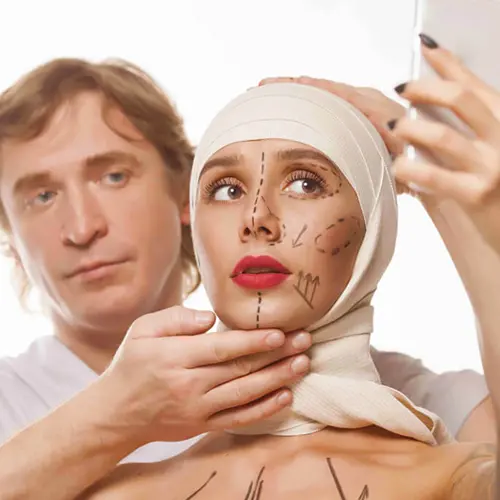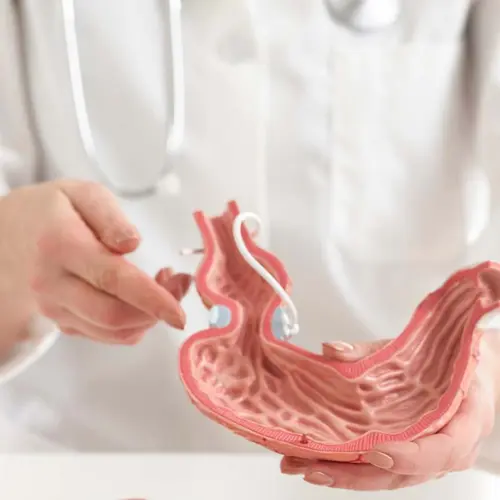Table of Contents
Hair transplant surgery is a safe and effective way to restore lost hair. However, the success of the procedure depends on how well you take care of your scalp during the recovery period.
To have a successful hair transplant process, it is essential to follow some tips.
For example, you should select a highly skilled and experienced surgeon who specializes in hair transplantation and make sure to do your research and check the surgeon's credentials, qualifications, and before-and-after photos of their previous patients.
Secondly, you must follow the pre-operative instructions given by your surgeon, which may include abstaining from certain medications or activities to ensure optimal results.
In this article, we will focus on understanding the hair transplant recovery process and what you can do for the best results.
Understanding the Hair Transplant Healing Process
Hair transplant is a surgical procedure that involves transferring hair follicles from one part of the scalp to the balding areas. It is a highly effective treatment for hair loss, and the results are often permanent. However, like any surgical procedure, a hair transplant has a healing process that patients should understand before deciding to undergo hair transplant surgery.
It's important to note that the hair transplant surgery recovery time can vary from person to person, and some patients may experience faster or slower healing times. Patients should also be aware that hair transplant surgery is a procedure and carries some risks, such as infection and scarring. It's important to discuss these risks with a qualified doctor before undergoing the procedure.
The First Few Days after Hair Transplant Surgery: What to Expect
The first few days after a hair transplant surgery can be a crucial time in the healing process. Here's what to expect during this time:
- Pain and discomfort: It is common to experience some pain and discomfort in the first few days after the procedure. The doctor may prescribe pain medication to help manage this discomfort.
- Swelling: Swelling is also a common side effect of hair transplant surgery, and it may last for a few days. Applying a cold compress to the scalp can help reduce swelling.
- Bleeding: It is normal to experience some bleeding and oozing from the scalp for the first day or two after the procedure. The doctor will provide instructions on how to manage this.
- Scabbing: Scabbing is a normal part of the hair transplant surgery recovery time and will occur as the scalp begins to heal. The patient should avoid touching or picking at the scabs to avoid damaging the newly transplanted hair follicles.
- Rest: It is essential to rest and avoid strenuous activities for the first few days after the procedure. The patient should also avoid bending over or lifting heavy objects to avoid putting pressure on the scalp.
It's important to follow the doctor's instructions carefully during the first few days after the procedure to ensure proper healing and minimize the risk of complications. If the patient experiences any severe pain, bleeding, or other concerning symptoms, they should contact their doctor immediately.
Tips for Minimizing Discomfort and Pain during Hair Transplant Recovery
Recovering from a hair transplant surgery can be uncomfortable, but several tips can help minimize pain by applying hair transplant post-op care:
- Take prescribed pain medications: The doctor may prescribe pain medication to help manage discomfort after the procedure. It's important to take these medications as directed to control pain and minimize discomfort.
- Apply a cold compress: Applying a cold compress to the scalp can help reduce swelling and discomfort. The patient should wrap ice or a cold pack in a towel and apply it to the scalp for 10-15 minutes at a time, several times a day.
- Sleep with an elevated head: Elevating the head while sleeping can help reduce swelling and discomfort. The patient should prop themselves up with pillows or use a recliner to sleep for the first few days after the procedure.
- Avoid touching or picking at the scalp: It is important to avoid touching or picking at the scalp to prevent damaging the newly transplanted hair follicles and causing further discomfort.
- Follow the doctor's instructions: The doctor will provide specific instructions on how to care for the scalp after the procedure. It's important to follow these instructions carefully to ensure proper healing and minimize discomfort.
It's also important to remember that everyone's experience with hair transplant surgery recovery time will be different.
Hair Transplant Recovery: How Long Does It Take to See Results?
Hair transplant surgery is a process that requires patience and commitment, as it can take several months to see the final results. Here's a general timeline for the hair transplant recovery process and when patients can expect to see results:
- Immediately after the procedure: The patient's scalp may be sore and swollen, and there may be scabbing around the transplanted hair follicles. Within a week or two, these scabs will naturally shed.
- Weeks 2-4: The transplanted hair follicles will enter a resting phase and may fall out. This is a normal part of the healing process, and new hair growth will begin within a few months.
- Months 3-4: The first signs of new hair growth will begin to emerge, and the patient may notice small hairs beginning to appear on the scalp.
- Months 6-9: The hair will continue to grow and thicken, and the patient will see more noticeable improvements in hair density and thickness.
- After 12 months: The patient will have fully recovered from the hair transplant, and the results will be permanent. The patient should continue to follow a healthy hair care routine and avoid activities that could damage the scalp.
Post-Surgery Hair Care: What You Need to Know for a Successful Recovery
Proper post-surgery hair care is essential for a successful hair transplant recovery. Here are some important points.
- The doctor will provide instructions on how to wash the scalp after the procedure. The patient should use a gentle shampoo and avoid rubbing or scratching the scalp.
- The patient should avoid exposure to direct sunlight and wear a hat or scarf to protect the scalp when outside. Sunburn can damage the scalp and harm the newly transplanted hair follicles.
- The patient should avoid using heat-styling tools like curling irons or flat irons for several weeks after the procedure. Brushing or combing the hair should also be done gently to avoid damaging the scalp.
- The patient should avoid strenuous activities, including exercise, for the first few days after the procedure. Heavy lifting or bending over can put pressure on the scalp and affect the healing process.
- The patient should follow the doctor's instructions carefully to ensure proper healing and minimize the risk of complications.
- Both smoking and drinking increase the risk of complications and slow down the healing process. The patient should avoid smoking and alcohol for several weeks after the procedure.
Foods and Nutrients to Support Hair Transplant Recovery
A balanced diet is crucial for overall health and can aid in the recovery of hair transplants. One must get protein, iron, vitamin C, B vitamins, zinc, and omega-3 for a hassle-free process. In addition to these specific foods and nutrients, it's important to eat a well-rounded diet that includes a variety of fruits, vegetables, whole grains, and lean proteins. Drinking plenty of water is also important for overall health and can help support the healing process after a hair transplant.
Exercise and Activity Restrictions during Hair Transplant Recovery
During hair transplant recovery time, it's important to avoid certain activities that can put stress on the scalp and affect the healing process.
Strenuous exercise, including weightlifting and running, can increase blood pressure and cause sweating, which can affect the healing process. It's recommended to avoid strenuous exercise for at least 2 weeks after the procedure. Additionally, sweating can irritate the scalp and affect the healing process. Avoid activities that cause sweating, including hot yoga and intense cardio workouts. Chlorine in swimming pools and hot tubs can irritate the scalp and affect the healing process. It's recommended to avoid swimming and hot tubs for at least a month after the procedure.
Following these exercise and activity restrictions can help ensure proper healing and optimal results after a hair transplant surgery. It's important to follow the doctor's instructions and ask any questions or concerns about activities and exercise during the hair transplant post-op care process.
Conclusion: Maximizing Your Hair Transplant Recovery and Enjoying Long-Term Results
A successful hair transplant recovery time requires careful attention to hair transplant post-op care and maintenance. By following the recommendations provided by your doctor, you can maximize your recovery and enjoy long-term results.
Your doctor will provide specific instructions on how to care for your scalp after the procedure. It's important to follow these instructions carefully to ensure proper healing and minimize the risk of infection or other complications.
After a hair transplant surgery, your scalp will be more sensitive than usual. Avoid scratching, rubbing, or touching the scalp, and follow a gentle hair care routine to minimize trauma to the hair follicles.
It takes time for the hair follicles to heal and for new hair growth to occur. Be patient and follow your doctor's instructions to ensure the best possible long-term results.
By following these tips, you can help ensure a successful hair transplant recovery and enjoy long-term results that improve your confidence and quality of life.




















